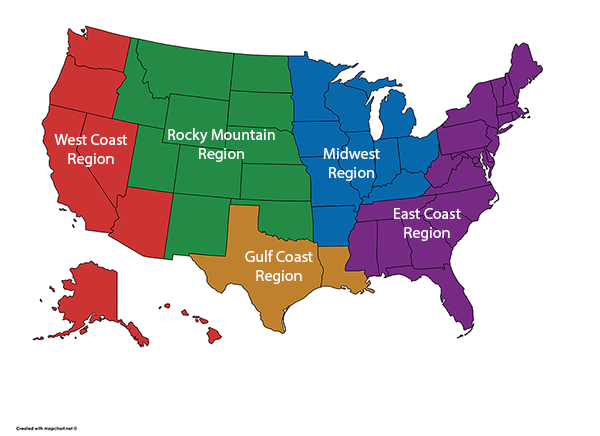For export managers, understanding of some basic terms is vital to succeed in global trade.
Thorough understanding of important export trade terms such as HS codes, incoterms and export documentation is essential in global trade. Understanding not only helps commercially, but also avoids costly errors. Essentially it helps to create effective quotes and negotiate better commercial trade terms.
Building insights doesn’t take much time either. Thanks to new age digital tools and data repository, export managers no longer have to rely on traditional methods.
Are you ready to learn what it takes to succeed as export manager? In this 3 part series we will discuss 5 most essential trade terms for export managers to succeed in global trade.
Benefits of Learning trade terms
All of us know that global revenue from cross border trade has tripled since 2005 and is excess of 28.5 trillion dollars nearly 51.2% of world GDP. It not only generates revenues but also comes with many growth benefits for the business. Any business wanting to diversify their revenue sources or grow market share will be at a significant disadvantage without it.
Export managers need to keep these trade terms at the centre of every commercial decision. By understanding these trade terms export managers can tailor everything from sales to profit margins for their global customers. In doing so, it will reduce the trade dispute and poor customer experiences— any of these two is enough to make 66 percent of customers switch to a competitor.
Knowledge of export trade terms can also help discover new customers, profitable business territories and risks. New profitable export markets become obvious to export managers when they seek application of these terms. So, not doing proper research could threaten the business profitability.
Ultimately, understanding and due diligence of these terms may give huge competitive advantage. That’s why more than 40% international exporters make decisions based on these terms.
How to Use these trade terms to drive exports
You can leverage knowledge of these terms in several ways, but using it to optimize your commercial contract, from quotation to payment, is one of the most required aspect of exports.
For instance, using right terms and codes will ensure the goods are released from customs without any hitch. Almost half of all goods stuck at customs warehouse are delayed, due to incorrect documentation and trade terms. What importers want is correct documentation simply becomes it saves lot of time and cost of clearance at ports.
Trade terms understanding also helps to focus sales efforts to markets where you have a competitive advantage. Many times these trade terms depends upon political alliances and regional trading blocs. By understanding these trading blocs it could identify untapped markets with lower trade and tariff barriers. Concentrating focus on your exports here, instead of non-favourable countries, helps to improve ROI.
5 essential Trade terms all Export Managers must know well
It doesn’t require a dime to understand these trade terms. The internet data repository provides free access to all these terms. We have highlighted just five of most commonly used.
1. H.S Code – What is HS code? Where to look up for HS Codes?
H.S Codes or classification is a global harmonized system (HS) of tariff nomenclature. The system based on name and numbers to classify products developed by World Customs Council based in Brussels. Belgium.
The HS code is organized into 21 sections, subdivided into 99 chapters. The 99 HS chapters are further subdivided into 1,244 headings and 5224 subheadings
A simplified sample representation is as below;

Simplified guide with easy vocabulary can be downloaded from here.
This simplified guide helps to select correct HS code on export invoice. Importer can determine applicable tariff and general requirements to import. A wrong classification (not matching product description on overseas invoice) may lead to goods stuck at customs.
Generally most of the export managers are well conversant with the use and correct selection of HS codes.
2. Export Documentation List
The export documentation requirements vary from country to country. It is advisable to prepare export documentation checklist before preparing a commercial quote. This is because sometime a specific export documentation requirement (example legalization of documents by local trade office) entails specific fees to be paid.
Commonly required export documentation list is as below
1. Proforma Invoice
2. Commercial Invoice
3. Packing List.
4. Transportation documents
Airway Bill
Bill of Lading
5. Export Compliance documents
Certificates of Origin
Shipper Export declaration
Export Licences
Destination Control statements (specific to country)
Successful export managers are always conscious of export documentation as any missing document leads to cost overruns and delays in deliveries.
Incoterms
Incoterms is one of the most challenging for any export manager in international trade. These are set of trade terms set by ICC (International chamber of commerce).
It is broadly defined in 4 principle categories E,F,C &D
• E Category incoterms refers to Departure (example EXW i.e. Ex works)
• F Category incoterms refers to Carriage Unpaid
FCA (Free Carrier)
FAS (Free Alongside Ship)
FOB (Free on Board)
• C Category Incoterms Carriage Paid
CPT (Carriage paid to)
CIP (Carriage and Insurance paid to)
CFR (Cost and Freight)
CIF (Cost, Insurance and Freight)
• D Category Incoterms refers to Arrival
DAP (Delivered at Place)
DPU (Delivered at Place Unloaded)
DDP (Delivered Duty Paid)
Incoterms involves lot of negotiations between exporter managers and importing company. As both want to work on most favorable terms.
There are many other variations introduced in Incoterms recently based on contractual obligations. However all incoterms can be allocated to above four basic principle categories.
Conclusion
Finally, to optimize overall export sales export managers need to plan payments, logistics and warehousing.
We will be analysing these two variables namely international payments and bonded warehousing in the second part of series.
Keeping a good grip on effectiveness of each of these 5 trade tools can do more of what works and less of what doesn’t.
Keep following us for the second part of series wherein we discuss the other two most important elements. The two elements being International Payment and trade finance options alongwith logistics and warehousing.
The third part of series will highlight how export managers can optimize these 5 commonly trade terms. Thus enabling them to achieve high success rates in export contract negotiations and closing.



